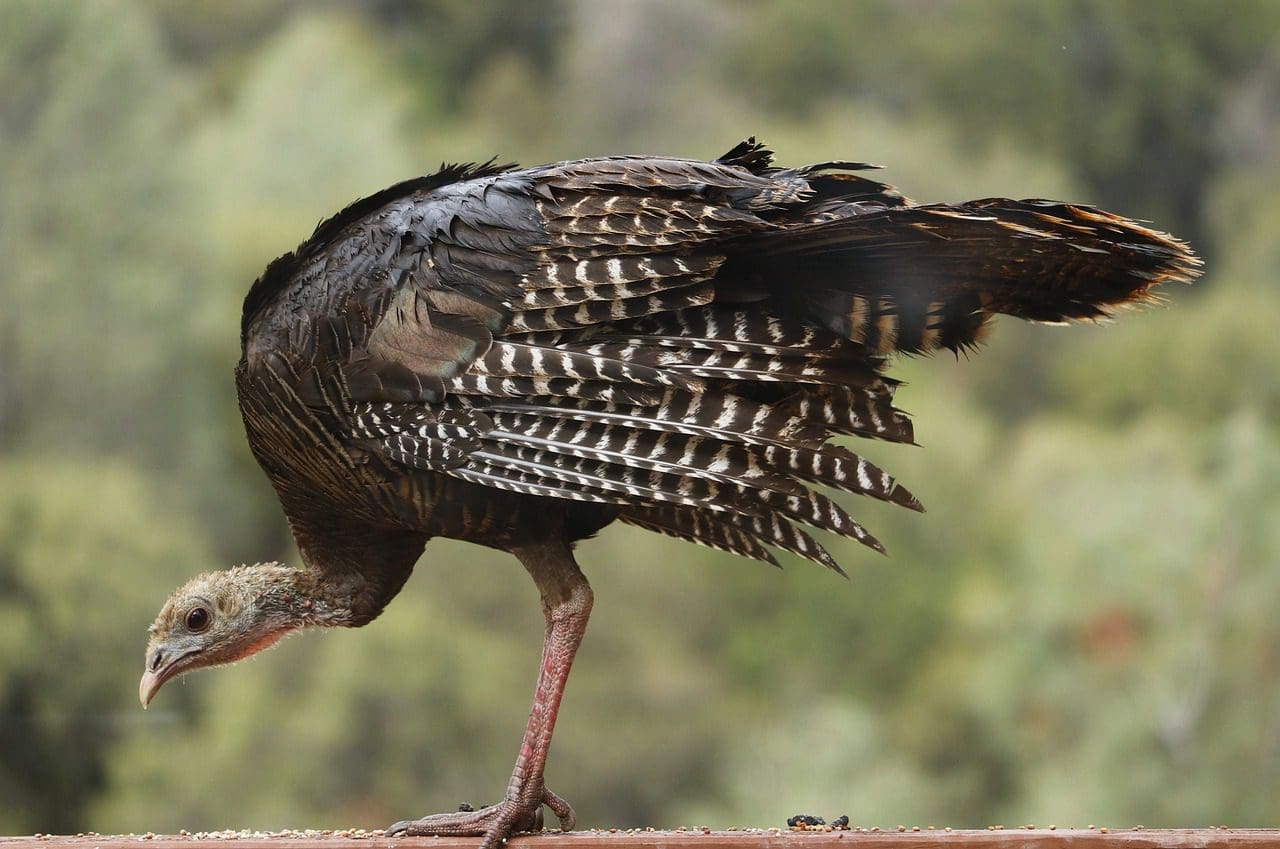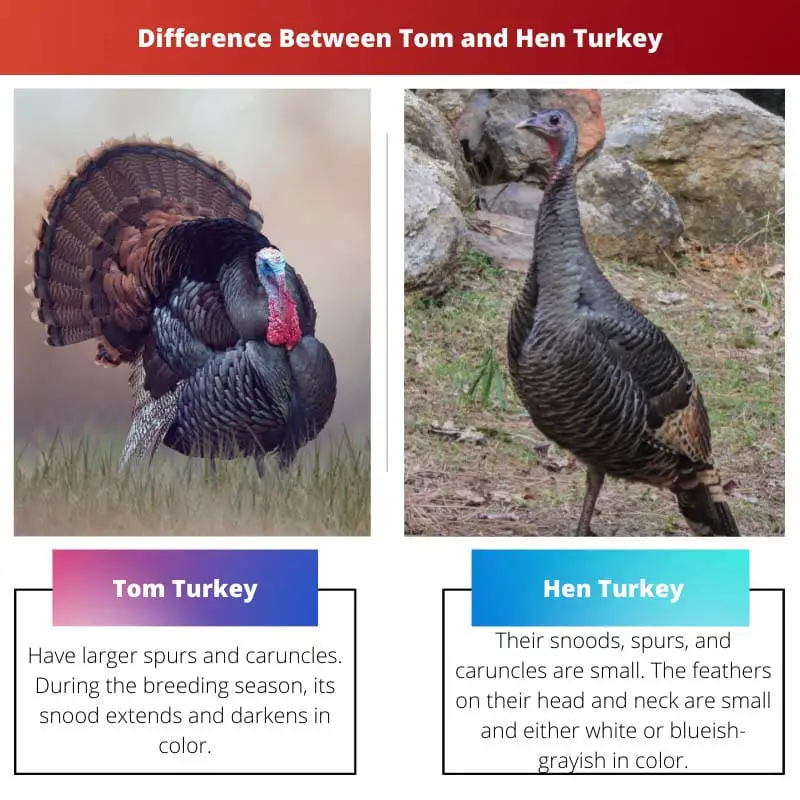Are you prepping to host a memorable Thanksgiving dinner but can’t decide on the type of turkey you need for the table?
From selecting the desired size to deciding whether to buy a frozen or a fresh one, cooking a delicious turkey requires a lot of thought to be put into it.
Key Takeaways
- Tom turkeys are male turkeys, while hen turkeys are female turkeys.
- Tom turkeys have larger bodies, feathers, and snoods than hen turkeys.
- Hen turkeys have a higher meat-to-bone ratio compared to tom turkeys.
Tom Turkey vs Hen Turkey
Tom turkeys, also known as male turkeys, are larger than hens and have more colorful and prominent feathers, particularly during the breeding season. Hen turkeys are smaller, have duller feathers, are kept for egg-laying, and their meat is considered to have a richer flavour than that of toms.

Tom turkeys are matured male turkeys and are also known as Gobblers. A tom turkey weighs between 8 to 10 kgs and ideally matures within 20 weeks.
A hen turkey is reared for 12 to 16 weeks and weighs between 3 to 7 kg. However, if a hen turkey weighs about 10 to 12 kg, it develops a layer of fat that adds a flavour to the turkey on being roasted.
Comparison Table
What is Tom Turkey?
Tom turkeys are adult male turkeys. Along with making about 30 types of calls, a tom turkey is also called a Gobbler as it makes gobble sounds.
A full-grown tom turkey is black with iridescent gold, bronze, copper, red, green, and blue hues. It has big caruncles that are fleshy, with red bumps covering its neck and head.
This is its most striking physical feature because, during the breeding season, the snood extends past the beak and darkens in color depending on the turkey’s level of excitement.
They also have beards that are 5 to 12 inches long in an effort to please the hen turkey, the tom turkey fans out its tail feathers magnificently.
Not all tom turkeys can sire poults. Only the dominant ones can sire, whilst the subordinate tom turkey assists the dominant one in mating.
Cooking a tom turkey would mean that the bones will be bigger and the meat little. However, the meat will be tender if the turkey isn’t too old.

What is Hen Turkey?
A hen turkey is an adult female turkey. It is smaller than a tom and weighs about 3 to 7 kg. It takes approximately 12 to 16 weeks to rear up a hen turkey.
They are not as attractive as their male counterpart. Hen turkeys are brown and have grey or white-tipped breast feathers.
Unlike the tom, the hen turkeys cannot extend their snoods but find males with longer, larger, and brighter snoods more appealing as it is an indicator of being physically fit.
The females are capable of laying nine to thirteen eggs. The healthier hen turkeys nest earlier in comparison to females who aren’t in good condition.
Ideally, a hen turkey should weigh between 3 to 7 kgs, but if it weighs around 10 kgs, it suggests that the turkey has developed a layer of fat which, after being roasted, adds a juicier texture and flavour to the meat.

Main Differences Between Tom and Hen Turkey
- A tom turkey grows faster in its early days and has relatively low mobility. In contrast, a hen turkey’s growth in the initial days isn’t as rapid as a tom’s and has high mobility.
- While only the dominant tom turkeys can sire poults and the subordinate tom turkeys can only assist the former in mating, all hen turkeys can lay eggs.

- https://www.sciencedirect.com/science/article/pii/S0032579119306297
- https://www.sciencedirect.com/science/article/pii/S1056617119313819











































